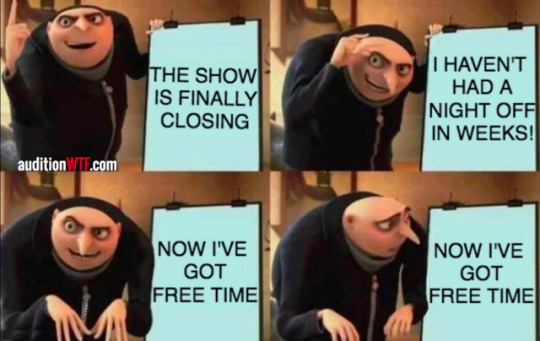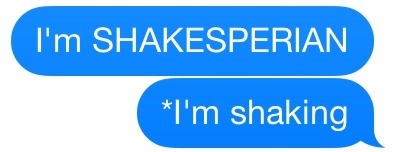Owen. 19. Sound Designer, technician, musician, and theatre geek extraordinaire. Ask and inbox are always open for questions or a conversation!
Don't wanna be here? Send us removal request.
Text
the essence of a theatre design student is sweet-talking the plotter at 2 in the morning
232 notes
·
View notes
Note
what are some pieces of advice you'd give to high school students hoping to pursue sound as a career?
Boy I have been on Tumblr in a while I apologize for not replying sooner. Answer below!
A few things. Get involved as much as you can. Go try out community theater or she’s at your school. Heck go see if you can work at a bar mixing bands. Honestly jut get involved in anything you are even slightly interested in. High school is a great time to look for those things and really develop a wide breadth of skills before you go to college (if that’s your plan).
And I don’t mean just sound either. Do some lighting or some carpentry. It might not benefit you directly as a sound designer but it’ll make you a better technician overall. And it’ll help with my next point.
Meet people! I can’t tell you how valuable it is to know people. Back in high school I met an older near retired LD who showed me the ropes and it me in contact with places to get me small jobs and I learned my way up until I could fend for myself.
High school is a good time to mess around and try things out. If you don’t have work give yourself pet projects. Read a play and make some sound effects for it. You don’t need a full production to be creative, you just need the inspiration.
If you want more practical tips on applying for colleges or networking feel free to ask. And I’m always available for any other question or if you need me to clarify anything.
29 notes
·
View notes
Text
Freelancing in technical theater means you’re on a lot of different email lists. People need a crew, they send out an email, you respond with your availability. Now, most people start these with things like “hey folks” or “hi everyone”. Neal is not most people.
His openers started off innocent enough.

Then, he started to push boundaries.




And as you can see, it has spiraled out of control since then.





203K notes
·
View notes
Text
theaterninja12 replied to your post: We really did not cover Equity, IATSE, or LORT in…
At least a semester before graduating, everyone in our program had a capstone class that covered a bunch of topics. We spent about a week discussing unions and stuff
Do you go to school at a conservatory or a more focused tech theatre program?
18 notes
·
View notes
Text
what I think my technical documentation looks like:

what my technical documentation actually looks like:

201 notes
·
View notes
Text
Things I have learned this year: • I am a sound engineer, not a miracle worker. • teach yourself things because no one else will • laugh at yourself • also cry • push as many buttons on the console as you can • life is hard • life is better with friends
227 notes
·
View notes
Text
“Okay these four fly cues have to happen at the same time”
“But… there’s only two of us on stage left, so there might be a couple second delay”
“no all at the same time, together”
guess I’ll die
162 notes
·
View notes
Text
Creating a Calling Script
When you are starting to create a calling script it’s important to first create a list of all the different elements you will be in charge of cueing. For example lights, sounds, projections etc. This will help you figure out how many different tabs / colors you will need.
After that, I like to create my run sheets so that I have a complete list of the cues I need to put into my book. Below is my cue sheet from the last show I did. Once I have these lists for all the elements I call then I can easily transfer everything into my book

NAMING CONVENTIONS
In the professional theatre generally, there are conventions used to label cues. I like to call the whole department (ie. Lights 1, Sound A).
Lights: LX, use numbers LX 1, LX 2
Sounds: SX or S, use letters after Z move to AA, AB…
MARKING CUES IN A SCRIPT
Every stage manager has a different way of marking cues in their script. The general idea is to have the name of the cue next to the place in the script the where it will be called. I like to use colored tabs to mark cues which helps me easily identify what I am about to call.
You should also mark stand-by’s for each cue. As a convention, I like to mark them about half a page before they are called.
Once cues are solidified you can highlight your stand-by’s to correspond to your cues to help call easily.
758 notes
·
View notes
Text
SM: Hi folks, we’re 5 minutes to places.
Actor: Stop it with these threats!
125 notes
·
View notes
Text
Watching a show with questionable tech elements, hoping the actors don’t get hurt

829 notes
·
View notes
Text
“Y’all have got to stop with the weird noises over headset. Honestly”
101 notes
·
View notes



